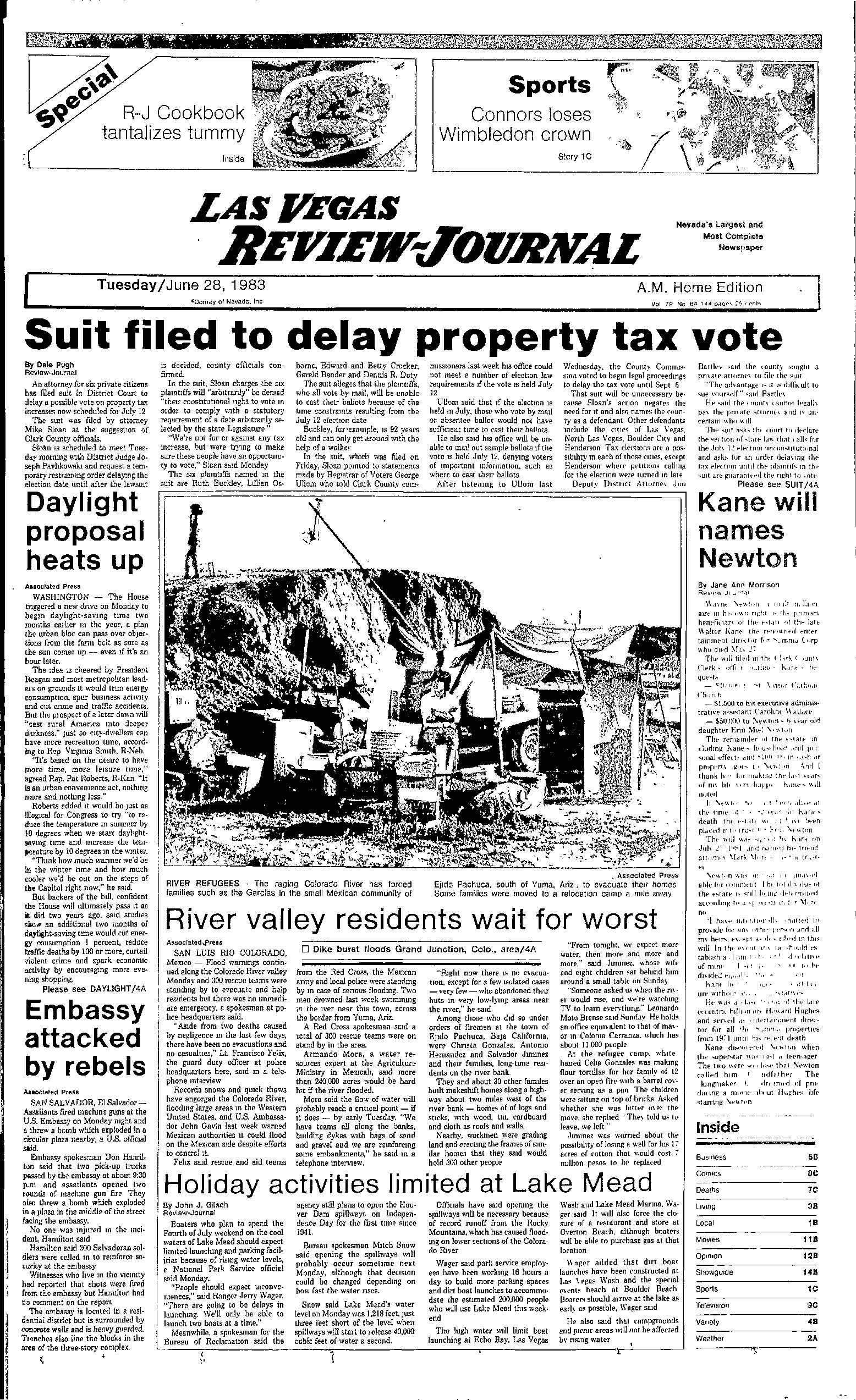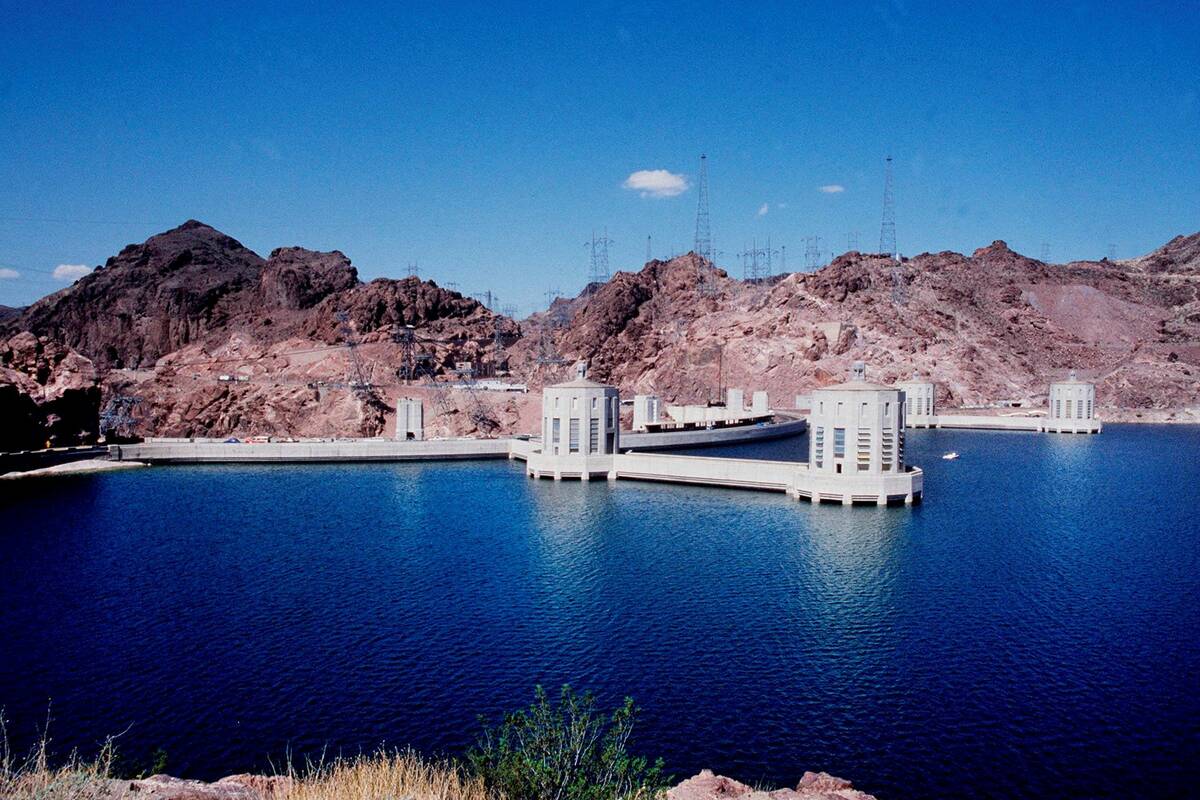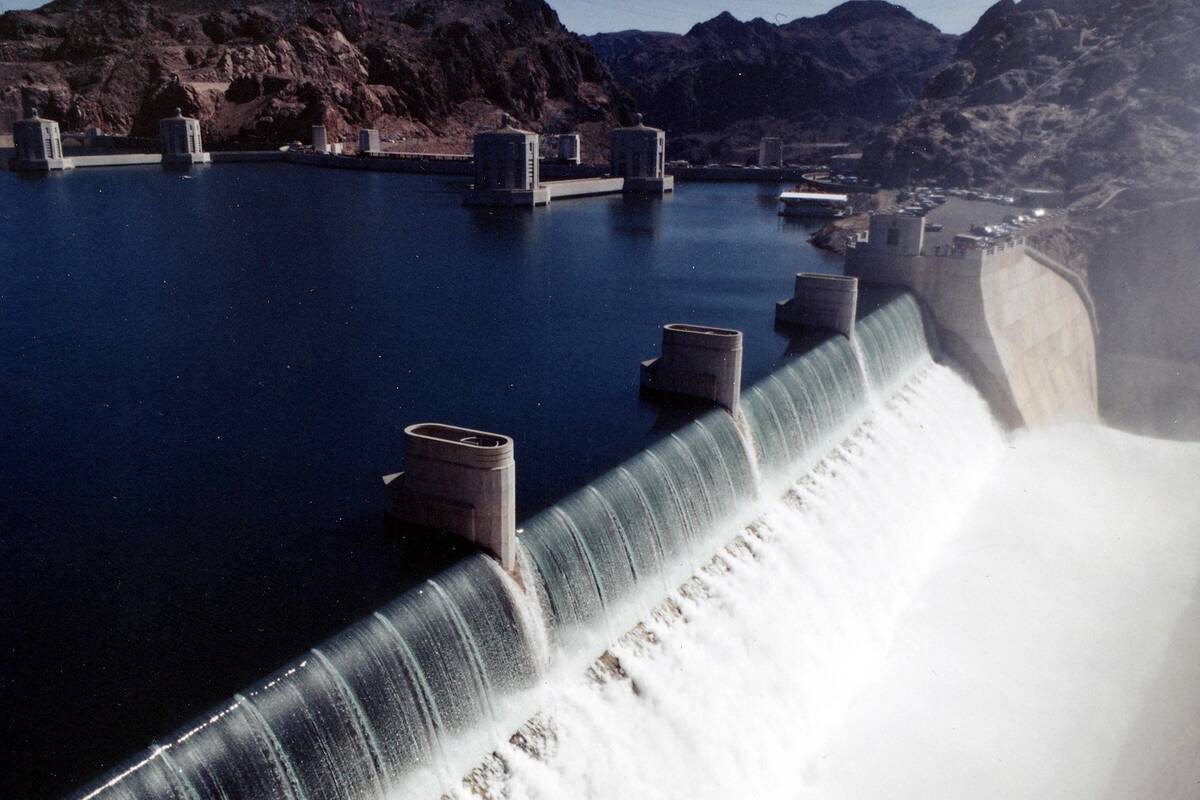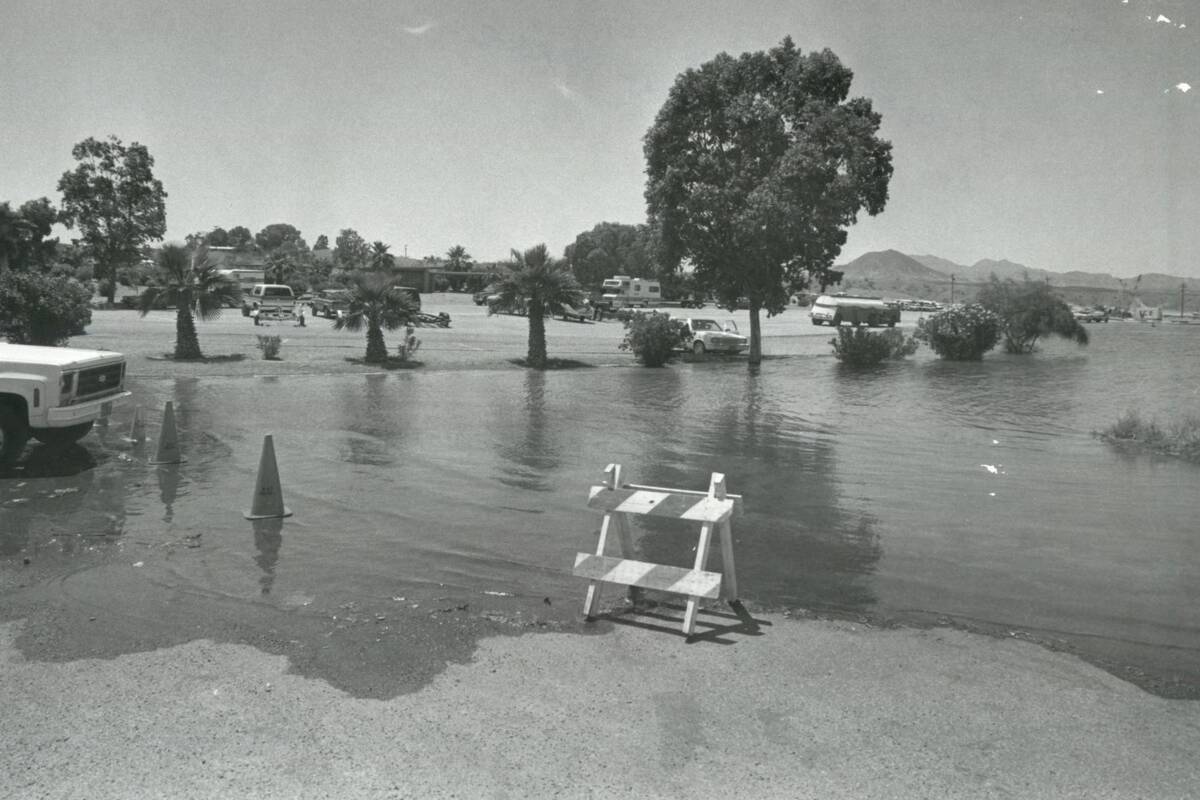REMEMBER WHEN: Lake Mead nears full capacity in June 1983 — PHOTOS

The headline says it all: “Holiday activities limited at Lake Mead.”
Big deal, you say. This is 2022. Lake Mead is shrinking faster than our wallets.
But that Review-Journal headline was written … wait for it … in 1983.
On this day in 1983, the Review-Journal warned readers that holiday activities at Lake Mead would be limited because of high water levels. Yeah, that’s right, HIGH water levels.
“Boaters who plan to spend the Fourth of July weekend on the cool waters of Lake Mead should expect limited launching and parking facilities because of rising water levels,” the RJ wrote.
The high water was expected to limit boat launching at Echo Bay, Las Vegas Wash and Lake Mead Marina.
“People should expect inconveniences,” a park ranger said.
The article said that employees at Lake Mead National Recreation Area “have been working 16 hours a day to build more parking spaces and dirt boat launches to accommodate the estimated 200,000 people who will use Lake Mead this weekend.”
There was so much water from the record runoff from the Rocky Mountains, the Hoover Dam spillways were a month away from being opened, releasing 40,000 cubic feet of water every second.
As it turns out, the next month, the spillways were opened on July 22. The Bureau of Reclamation said the lake reached its highest elevation of 1,225.85 feet on July 24. It was the first time the spillways had been opened since 1941. The Hoover Dam opened in 1936.
In case you were wondering, Lake Mead’s current water level is about 1,043 feet. And more than 8 million people visited Lake Mead in 2020, making the park one of the National Park Service’s busiest sites.
— Chris Lawrence contributed to this report.
RELATED
Houseboat beached 3 weeks at Lake Mead rescued by YouTubers
Feds: Lake Mead could become 'useless' without major water use cuts
Lake Mead's steady decline hits low water mark
























